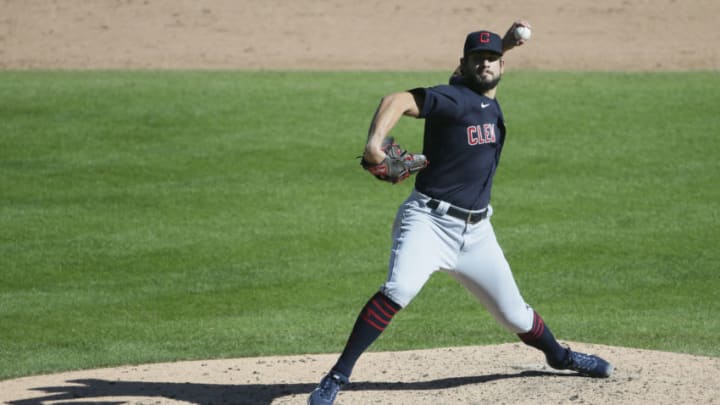On Sunday, we made the case for the Colorado Rockies signing reliever Brad Hand and today, we will make the case against the Rockies signing him.
Brad Hand is one of the best relievers in baseball. The standard numbers (ERA, WHIP, FIP, K/BB ratio) say it and the advanced numbers (hard-hit percentage, xBA, xOBA, xSLG, etc.) say it as well. However, that doesn’t mean that it would transfer over for the Colorado Rockies.
Most of the advanced numbers are good for him, like the ones mentioned above, but some are not, and they could be exacerbated, particularly at Coors Field. In 2020, he threw his “slider” 51 percent of the time. The “slider” is more of a curveball in my opinion, but I’ll let you be the judge on that.
Here is one of five “curveballs” that Hand threw in 2020. Here is his “slider.” The “curveball” is the first pitch in an appearance and the “slider” on the very next pitch.
Regardless of whether you think the pitch is a curveball or a slider, the pitch likely will be impacted at Coors Field as the issues with the curveball (or pitches with more of a vertical drop, which Hand’s breaking pitch does) at Coors have been well-documented and seen (e.g. Darryl Kile).
Hand’s spin rate on that curveball could also spell problems as it is in the bottom third of the league.
More from Rox Pile
- A Colorado Rockies Thanksgiving
- Colorado Rockies: What if Todd Helton had played football instead?
- Colorado Rockies: Charlie Blackmon out for the season
- Colorado Rockies: Injuries shift look of roster ahead of Dodgers series
- Colorado Rockies: Has Sean Bouchard earned a second look in 2023?
Hand is also in the bottom 29 percent in fastball velocity, with the average velocity being 91 MPH. Hand’s whiff percentage is also in the bottom half (bottom 36 percent) and his barrel rate is also in the bottom half of the league (bottom 34 percent, to be exact). That number could spell problems at altitude (both at Coors and Chase Field in Phoenix, MLB’s second-highest stadium in elevation).
In his limited time at Coors Field, though, Hand has pitched well in 11 2/3 innings with an ERA of 3.86 and a .227/.333/.442 opponent slash line against him.
In an also limited time, in the postseason, he has been awful (2 1/3 IP, 6 H, 4 ER, 2 BBs, 15.43 ERA). In his last two postseason games, he had huge implosions as he allowed three inherited runners and two of his own to score in Game 3 of the 2018 ALDS, and in Game 2 of the 2020 Wild Card Series against the Yankees, he blew a 9-8 lead in the 9th inning for Cleveland, letting the Yankees tie and take the lead after he allowed the first three hitters of the inning reach base.
For the Rockies, they also have to determine how much Hand would cost. If he gets offers for $10+ million a season (like his team option that was declined was), the Rockies won’t be able to afford it.
Hand could help the bullpen and be great but they need more than one reliable reliever down there plus, they have to address a bevy of other issues if they plan on contending in 2021.
Overall, as with any player, there are pros and cons to signing any player on the free-agent market. Whether the Rockies decide to turn to the free-agent market, once again, to address their bullpen issues remains to be seen in the coming months.
